Fancy living in a tent? Yurts are gaining popularity as more and more people chose the traditional abode of Mongolians to live, work and play in.
Circular in design, the space creates an energy flow that cannot be equalled in a room with corners. There is an airiness added by the light coming in through the outer canvas and higher roof. Windows and doors function easily, and you can have all the conveniences without compromising efficiency.
In summer, simply lift the centre roof panel to help keep things cool, and enjoy a bit of star-gazing at the same time.
The ability to heat a yurt quickly is unbelievable—add options of wool lining and a pot-belly stove inside, and you have a cosy winter in any temperature.
Made of cedar wood framing and a poly-cotton canvas outer, yurts are versatile, portable and easily erected—some yurt dwellers boast that they can now put one up in half an hour.
Every metre in diameter increases the floor space tremendously. A five-metre diameter yurt gives 19.7sq metre floor area, while seven meters in diameter yields a 38.6 sq metre floor area.
New Zealanders are finding more and more uses for yurts, with some backpacker businesses using them as extra accommodation over the busy summer tourist season. Some people use them for guests, workshop/art studios, meditation/healing spaces, and kiddies play areas.
“There is some sort of magic about it,” says Kelly Black, a yurt resident in Arrowtown—one of the coldest places in the New Zealand winter. “There’s something about a circular building, the connections to the outdoors, the birds, my horse.”
Ms Black and her partner have lived in their yurt for over a year and they say it is a more natural way to live.
“It keeps you grounded in a sense. There is something about when you stand in the middle of the yurt—the sound, the acoustics are amazing. The sound comes back to you.”
She said they fitted a wool lining in their yurt for the winter this year after they were told they would get way too hot with a fire, and it is “amazingly effective”. Their flooring is self-built and is rug-covered plywood on top of freezer panels.
Yurt designer and builder, Bluey, from Jaia Tipis in Golden Bay, said it is the round space that draws people to yurts.
“The simplicity. Novelty—something different. The fact they can move it and put it wherever they want—that’s quite a big one. A lot of people buy them because they want their own home, but they don’t necessarily have their own land. So it means they can put them in a space and if they want to move, or have to move, they can take it with them.
Yurts also do not need a building consent in New Zealand—or many other countries—making them attractive to a wide range of people.
“We’ve got people buying them for extra space for their super-flash bach up in the Coromandel, to people that travel around in vans and put them up here and there, so nomadic, travelling people. We’ve had several guest house, backpacker accommodation places. They buy them for extra space over the busy period,” Bluey said. He said an order had just come in from Tasmania, Australia from a retired couple who have decided to downsize their life and live simply and cheaply.
“They can be quite classy accommodation—you’re not sort of roughing-it.”
Yurts can be fitted out with electrical appliances and electric lighting, and they are draught-proof and waterproof. The Canadian cedar framing Bluey uses, is sustainable and will last indefinitely, he said. The canvas cover will last around 7-8 years depending on the conditions. Ultraviolet light from the sun is the hardest element on the canvas, he said, more so than damp conditions.
Yurts, are also known as “gers” and are home for most of the Mongolian population. They are also a traditional abode for people ranging from Turkey to Siberia, says the Jaia website.
“People really love living in them,” Bluey summed up.
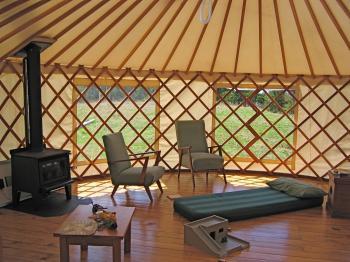

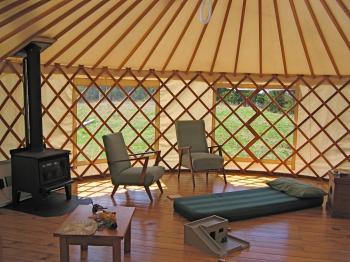
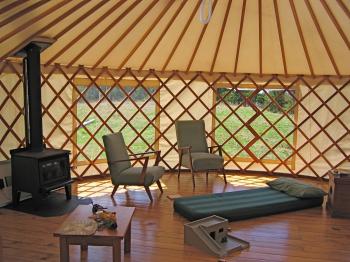
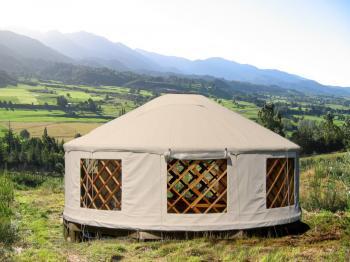
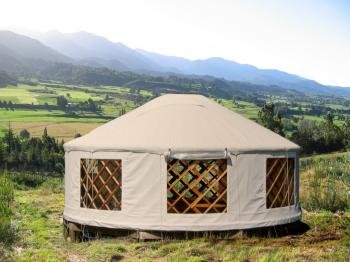
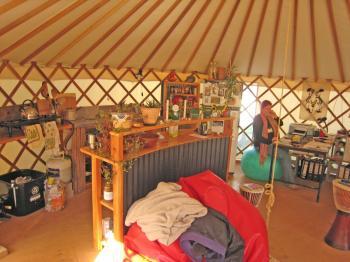
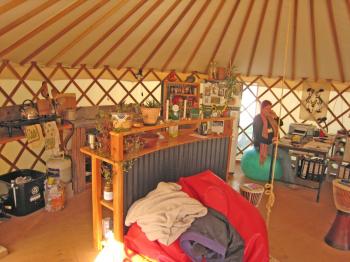




Friends Read Free